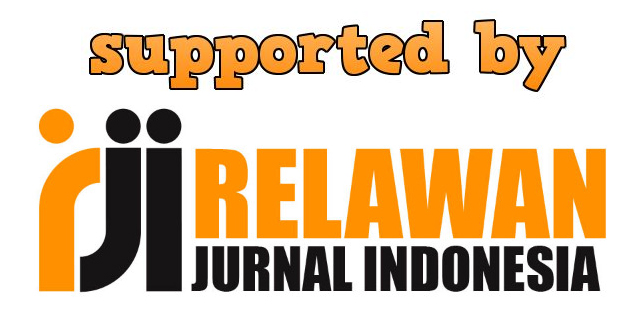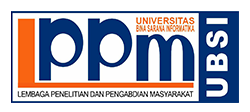Praktik Incidental News Consumption; ‘Muncul dan Menguat di Media Sosial?’
Abstract
Konsumsi berita insidental di media sosial membuat beragam tujuan maupun implikasi. Studi ini bertujuan ingin melihat bagaimana pola konsumsi berita insindetal di media sosial, dan mengeksplorasi ragam gagasan, dan temuan dari para pemikir tentang praktik Incidental News Consumption. Pendekatan yang digunakan pada studi ini adalah pendekatan kualitatif, dengan metode studi kasus. Sumber data diperoleh dari hasil wawancara, dan studi literatur yang relevan. Hasil penelitian menunjukkan bahwa ada dua hal; pertama, ketiga informan mengonsumsi berita insidental di media sosialnya masing-masing. Kedua, dari berbagai studi para peneliti kontemporer menggambarkan praktik konsumsi berita insidental semakin banyak terjadi di media sosial, dan muncul dari beragam situasi, kondisi, tujuan, dan konteks situasional yang berbeda-beda, serta muncul dari berbagai negara yang berbeda-beda juga. Selain itu, studi dari para peneliti di berbagai negara secara eksplisit maupun implisit menguatkan studi ini akan adanya praktik konsumsi berita insidental di media sosial.
Keywords
Full Text:
PDFReferences
Ahmadi, M., & Wohn, D. Y. (2018). The Antecedents of Incidental News Exposure on Social Media. Social Media and Society, 4(2). https://doi.org/10.1177/2056305118772827
Ardèvol-Abreu, A., Diehl, T., & Gil de Zúñiga, H. (2019). Antecedents of internal political efficacy incidental news exposure online and the mediating role of political discussion. Politics, 39(1), 82–100. https://doi.org/10.1177/0263395717693251
Barnidge, M. (2020). Testing the inadvertency hypothesis: Incidental news exposure and political disagreement across media platforms. Journalism, 21(8), 1099–1118. https://doi.org/10.1177/1464884920915373
Bergström, A., & Belfrage, M. J. (2018). News in Social Media: Incidental consumption and the role of opinion leaders. Digital Journalism, 6(5), 583–598. https://doi.org/10.1080/21670811.2018.1423625
Boczkowski, P. J., Mitchelstein, E., & Matassi, M. (2018). “News comes across when I’m in a moment of leisure”: Understanding the practices of incidental news consumption on social media. New Media and Society, 20(10), 3523–3539. https://doi.org/10.1177/1461444817750396
Feezell, J. T. (2018). Agenda Setting through Social Media: The Importance of Incidental News Exposure and Social Filtering in the Digital Era. Political Research Quarterly, 71(2), 482–494. https://doi.org/10.1177/1065912917744895
Fletcher, R., & Nielsen, R. K. (2018). Are people incidentally exposed to news on social media ? A comparative analysis. New Media & Society, 20(7), 2450– 2468. https://doi.org/10.1177/1461444817724170
Kaiser, J., Keller, T. R., & Königslöw, K. K. (2018). Incidental News Exposure on Facebook as a Social Experience : The Influence of Recommender and Media Cues on News Selection. Communication Research. https://doi.org/10.1177/0093650218803529
Kligler-vilenchik, N., Hermida, A., Valenzuela, S., & Villi, M. (2020). Studying incidental news: Antecedents, dynamics and implications. Journalism, 21(8). https://doi.org/10.1177/1464884920915372
Krisnawati, E. (2016). PERILAKU KONSUMSI MEDIA OLEH KALANGAN REMAJA DALAM PENCARIAN INFORMASI (Studi Kasus Perilaku Remaja di Kota Salatiga dalam Penggunaan Media Dalam Perspektif Teori Ketergantungan Media). Komunikatif, 5(1), 43–69.
Kümpel, A. S. (2019). The issue takes it all? Incidental news exposure and news engagement on Facebook. Digital Journalism, 7(2), 165–186. https://doi.org/10.1080/21670811.2018.1465831
Kümpel, A. S. (2020). The Matthew Effect in social media news use: Assessing inequalities in news exposure and news engagement on social network sites (SNS). Journalism, 21(8), 1083–1098. https://doi.org/10.1177/1464884920915374
Lee, S., & Xenos, M. (2020). Incidental news exposure via social media and political participation : Evidence of reciprocal effects. New Media and Society, 1–24. https://doi.org/10.1177/1461444820962121
Lestari, Y., Yulia, V., & Puspita, Y. (2017). Pola Konsumsi Media dan Kaitannya dengan Partisipasi Masyarakat pada Isu-Isu Publik di Kota Padang. Jurnal Penelitian Komunikasi, 20(2), 149–160. https://doi.org/10.20422/jpk.v20i2.190
Marcinkowski, F., & Došenović, P. (2020). From incidental exposure to intentional avoidance: Psychological reactance to political communication during the 2017 German national election campaign. New Media and Society. https://doi.org/10.1177/1461444820902104
Mariani, A. (2016). MENGUNGKAP BUDAYA KONSUMSI MEDIA BURUH PEREMPUAN LEWAT PERSPEKTIF CULTURAL STUDIES (Studi Etnografi pada Buruh Industri & Rumah Tangga di Malang). Jurnal Nomosleca, 2(1). https://doi.org/10.26905/nomosleca.v2i1.345
Matthes, J., Nanz, A., Stubenvoll, M., & Heiss, R. (2020). Processing news on social media. The political incidental news exposure model (PINE). Journalism, 21(8), 1031–1048. https://doi.org/10.1177/1464884920915371
Mitchelstein, E., Boczkowski, P. J., Tenenboim-Weinblatt, K., Hayashi, K., Villi, M., & Kligler-Vilenchik, N. (2020). Incidentality on a continuum: A comparative conceptualization of incidental news consumption. Journalism, 21(8), 1136–1153. https://doi.org/10.1177/1464884920915355
Pan, J., & Roberts, M. E. (2020). Censorship’s Effect on Incidental Exposure to Information: Evidence From Wikipedia. SAGE Open, 10(1). https://doi.org/10.1177/2158244019894068
Park, C. S., & Kaye, B. K. (2020). What’s This? Incidental Exposure to News on Social Media, News-Finds-Me Perception, News Efficacy, and News Consumption. Mass Communication and Society, 23(2), 157–180. https://doi.org/10.1080/15205436.2019.1702216
Prakoso, B., & Syafuddin, K. (2020). Komodifikasi Ramadan & Covid-19 Dalam Iklan Telkomsel Edisi “ Terus Jalankan Kebaikan .” Cakrawala-Jurnal Humaniora, 20(1), 96–105. https://doi.org/10.31294/jc.v19i2
Rusadi, U. (2014). Konsumsi Berita Lintas Media Massa Konvensional Dan Internet. Jurnal Penelitian Dan Pengembangan Komunikasi Dan Informatika, 4(3), 173–186.
Supratman, L. P. (2018). Penggunaan Media Sosial oleh Digital Native. Jurnal ILMU KOMUNIKASI, 15(1), 47–60. https://doi.org/10.24002/jik.v15i1.1243
Thorson, K. (2020). Attracting the news: Algorithms, platforms, and reframing incidental exposure. Journalism, 1–16. https://doi.org/10.1177/1464884920915352
Ulya, H. (2019). Komodifikasi Pekerja Pada Youtuber Pemula Dan Underrated. Interaksi: Jurnal Ilmu Komunikasi, 8(2), 1–12. https://doi.org/https://doi.org/10.14710/interaksi.8.2.1-12
Veal, A. J. (2006). Research Methods for Leisure and Tourism: A Practical Guide (Third). Pearson Education Limited.
Weeks, B. E., & Lane, D. S. (2020). The ecology of incidental exposure to news in digital media environments. Journalism, 21(8), 1119–1135. https://doi.org/10.1177/1464884920915354
Widi, R. K. (2010). Asas Metodologi Penelitian: Sebuah Pengenalan dan Penuntun Langkah demi Langkah Pelaksanaan Penelitian. Graha Ilmu.
Wieland, M., & Königslöw, K. K. (2020). Conceptualizing different forms of news processing following incidental news contact : A triple-path model. Journalism, 1–18. https://doi.org/10.1177/1464884920915353
Wimmer, R. D., & Dominick, J. R. (2011). Mass Media Research: An Introduction (Ninth). Wadsworth.
DOI: https://doi.org/10.31294/jkom.v14i2.15827
| Index by: | ||








|
||
| E-ISSN: 2579-3292 | ||

 https://road.issn.org/sites/all/themes/customroad/img/road-issn.png
https://road.issn.org/sites/all/themes/customroad/img/road-issn.png
|
||
Dipublikasikan oleh LPPM Universitas Bina Sarana InformatikaJl. Kramat Raya No.98, Kwitang, Kec. Senen, Kota Jakarta Pusat, DKI Jakarta 10450
|








